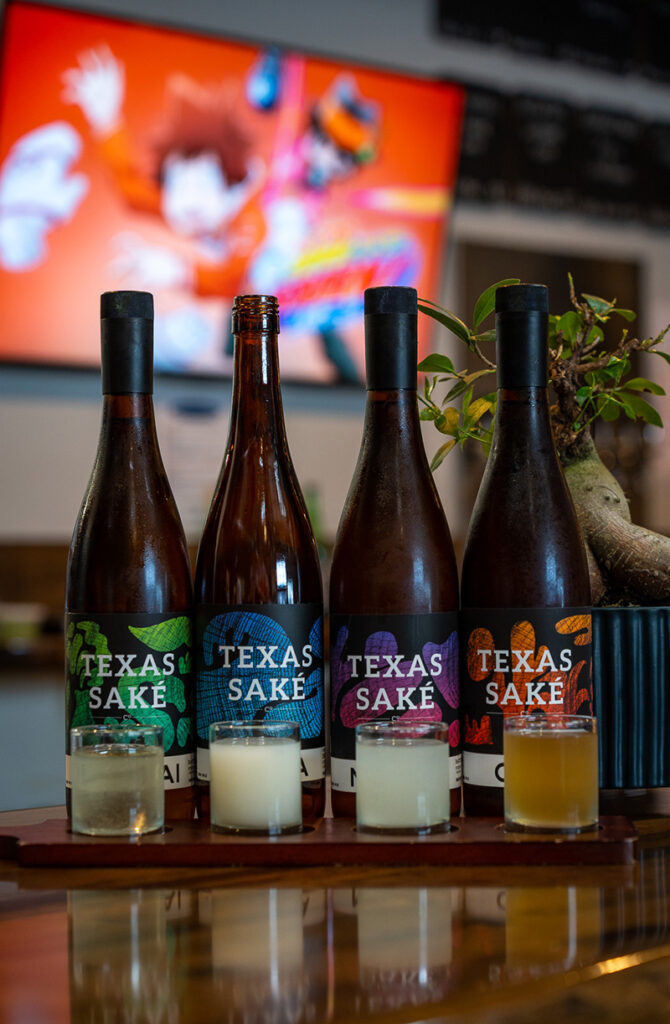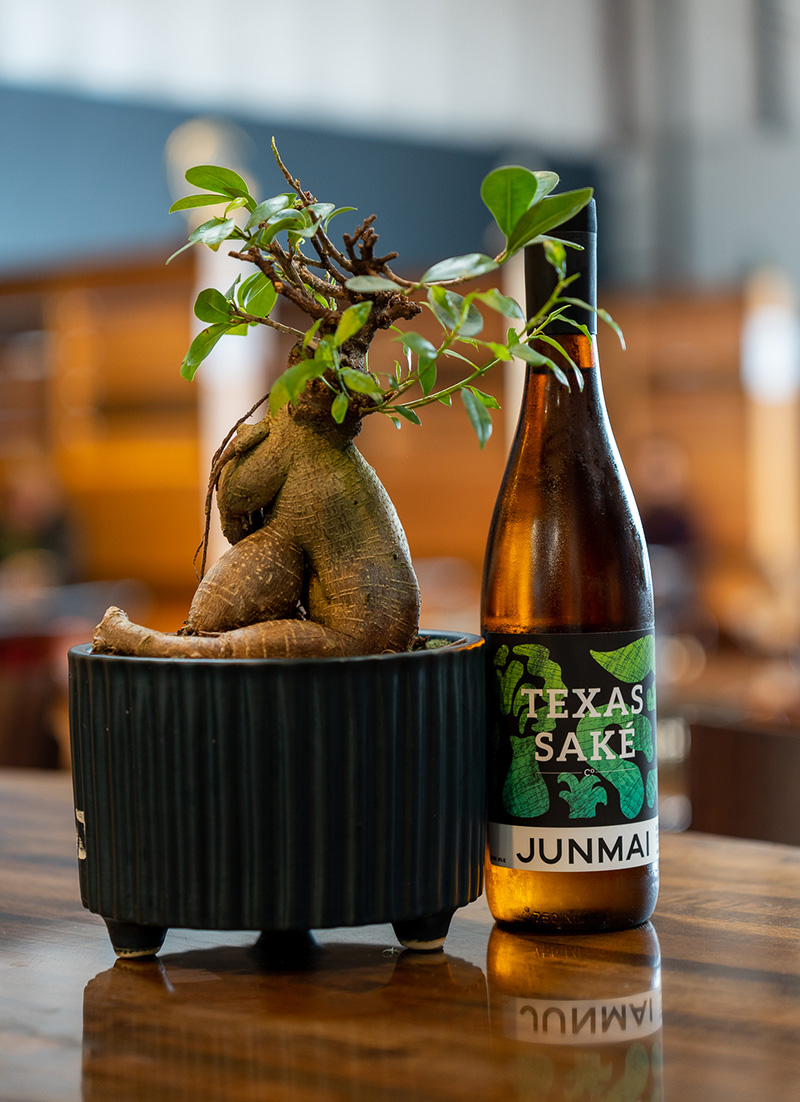Austin’s St. Elmo Arts District may have once had the feel of an industrial park, but today, it is an eclectic mix of small businesses, hand-painted murals, live music, and a thriving scene of Texas craft beverages. Tucked in among favorites such as The Austin Winery, St. Elmo Brewing, and Spokesman Coffee, you’ll discover an Asian flare at Texas Saké Company.
Yep, that’s right, saké — made in Austin. Texas Saké Company is the state’s only producer of this confounding beverage. Those who are a bit confused by saké are not alone.
Saké is an alcoholic beverage made from rice that originated in Japan over a thousand years ago. But what is it, exactly? Some call it rice wine. Technically, wine is made from the juice of fruit, so this beverage isn’t a wine. Others think saké is a distilled liquor because alcohol levels are often as high as 14 to 16 percent. Spirits and liquors are made by fermenting grain, fruit, or vegetables and then using heat to separate the alcohol from the water and other compounds. The resulting beverage is stronger with higher alcohol content. This heat process is not used in saké production, meaning it’s not a distilled beverage.

So, maybe it’s most accurate to call saké a beer? Beer is made from fermented grains, and rice is a grain. The production facility for making saké is called a brewery, and the person who makes saké is referred to as a toji, which translates to Master Brewer. Even the federal government classifies saké as beer. But this is just one thing that makes the ancient concoction mysterious.
The unfamiliar Japanese words can be intimidating for the first-time saké drinker. But those tasting shouldn’t let this deter them. In some ways, saké is quite simple. Only four ingredients are needed to brew the beverage — rice, water, yeast, and koji. Koji is one of those intimidating foreign words, and it refers to a specific mold spore used to break down the natural starches in the rice. The complex starches become simple sugars. Yeast is added to convert the sugars into alcohol. This fermentation process takes six weeks at a cool 50 degrees.
You may be surprised to learn Texas Saké’s roots go back to 2010. Tim Klatt was visiting his nearby Austin farmer’s market and tried the local saké. He was impressed and got on the mailing list. In 2013, the founder notified his followers that he was closing up shop. At this time, Tim, his brother Nathan, and their friend Adam Clumenshein were in the process of starting Strange Land Brewery in Westlake. Tim said, “I was young and inspired and thought, ‘Dude, you cannot shut down the only saké brewery in Texas!’ So we acquired the brand and have been running it since 2014.” The three business partners now have a total of seven food and beverage companies between them.
As soon as the trio purchased the brand, they imported new first-rate equipment from Japan and scouted for a modern, trendy location. They settled on the up-and-coming south Austin business complex on St. Elmo Road called The Yard. The brand’s relaunch and tap room opening were slated for March 2020. Of course, that’s the precise time the pandemic began shutting down much of our world. “You can’t make any of this up,” Tim chuckled. “We had lots of pivots, but everything is still going and growing.”
Today, Curt Christian is the toji, and he enjoys offering pioneering interesting flavors in the saké lineup. Traditionally, there are seven different categories of saké that differentiate between rice polishing ratio, brewing methods, and additional ingredients. Tasters shouldn’t be intimidated by the official names of junmai, namazake, or nigori. Texas Sakè embraces the opportunity to educate their guests on the wide world of saké. They even offer exclusive imports of Japanese bottlings for the discerning saké aficionado.
As a novice, I had to ask when is saké supposed to be served cold or warm. (The answer may surprise!) I expected the beverages to have a heat or burn going down, but that wasn’t the case. The Junmai is often considered the purest expression of saké and is often the favorite. There are sparkling versions, oaked saké using wood chips akin to winemaking, and options with added fruit flavors.
Take the experience to the next level with the addition of sushi produced in-house and created by Chef Michael Carranza. Many of the unique dishes are made to complement a specific saké on the menu.
Texas Saké is focused on using the highest-quality ingredients, staying true to tradition, and throwing in some creativity to keep things fresh and fun. The tasting space truly has a community feel, with regulars popping in to try the latest and new faces gingerly dipping a toe into the world of saké.
Tim confided, “We’re just trying to figure it out. Selling saké is not obvious, but saké will have its day. And we’ll be here for that.”


